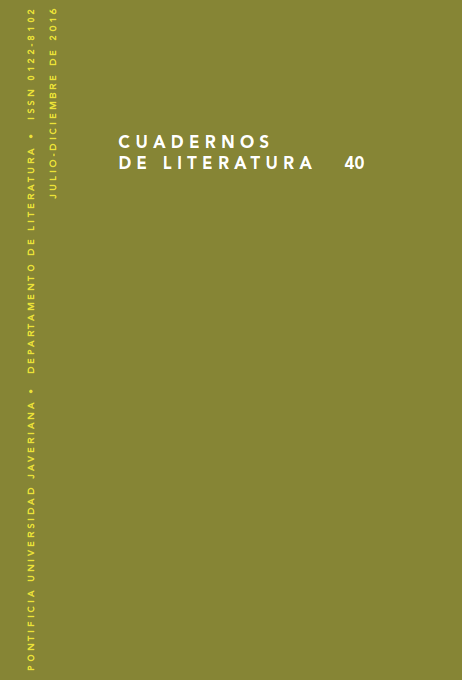Abstract
Este ensayo considera Condición de las flores, el libro del escritor mexicano/peruano Mario Bellatin y la obra del fotógrafo argentino Santiago Porter que lleva el mismo título. En ambos objetos, el artista/escritor despliega su poética o las condiciones para el desarrollo de su propia práctica estética. En ambas se explora la artificiosa naturaleza de la producción estética, la relación entre escritura e imagen, los vínculos entre identificación, visualización y producción de sentido. Bellatin y Porter establecen también una delicada relación con la naturaleza de la obra y con la naturaleza como parte de un díptico que la opone, la acerca y la articula con la idea de cultura en general y de arte en particular. A partir de un peculiarísimo modo de inscripción del impulso documental que marca gran parte del arte contemporáneo, las dos “Condición de las flores” abordan, también, la conceptualización de un nuevo Real que se incorpora como material y combustible del artefacto estético.
Cuadernos de Literatura is registered under a Creative Commons Attribution 4.0 International Public License. Thus, this work may be reproduced, distributed, and publicly shared in digital format, as long as the names of the authors and Pontificia Universidad Javeriana are acknowledged. Others are allowed to quote, adapt, transform, auto-archive, republish, and create based on this material, for any purpose (even commercial ones), provided the authorship is duly acknowledged, a link to the original work is provided, and it is specified if changes have been made. Pontificia Universidad Javeriana does not hold the rights of published works and the authors are solely responsible for the contents of their works; they keep the moral, intellectual, privacy, and publicity rights.
Approving the intervention of the work (review, copy-editing, translation, layout) and the following outreach, are granted through an use license and not through an assignment of rights. This means the journal and Pontificia Universidad Javeriana cannot be held responsible for any ethical malpractice by the authors. As a consequence of the protection granted by the use license, the journal is not required to publish recantations or modify information already published, unless the errata stems from the editorial management process. Publishing contents in this journal does not generate royalties for contributors.


